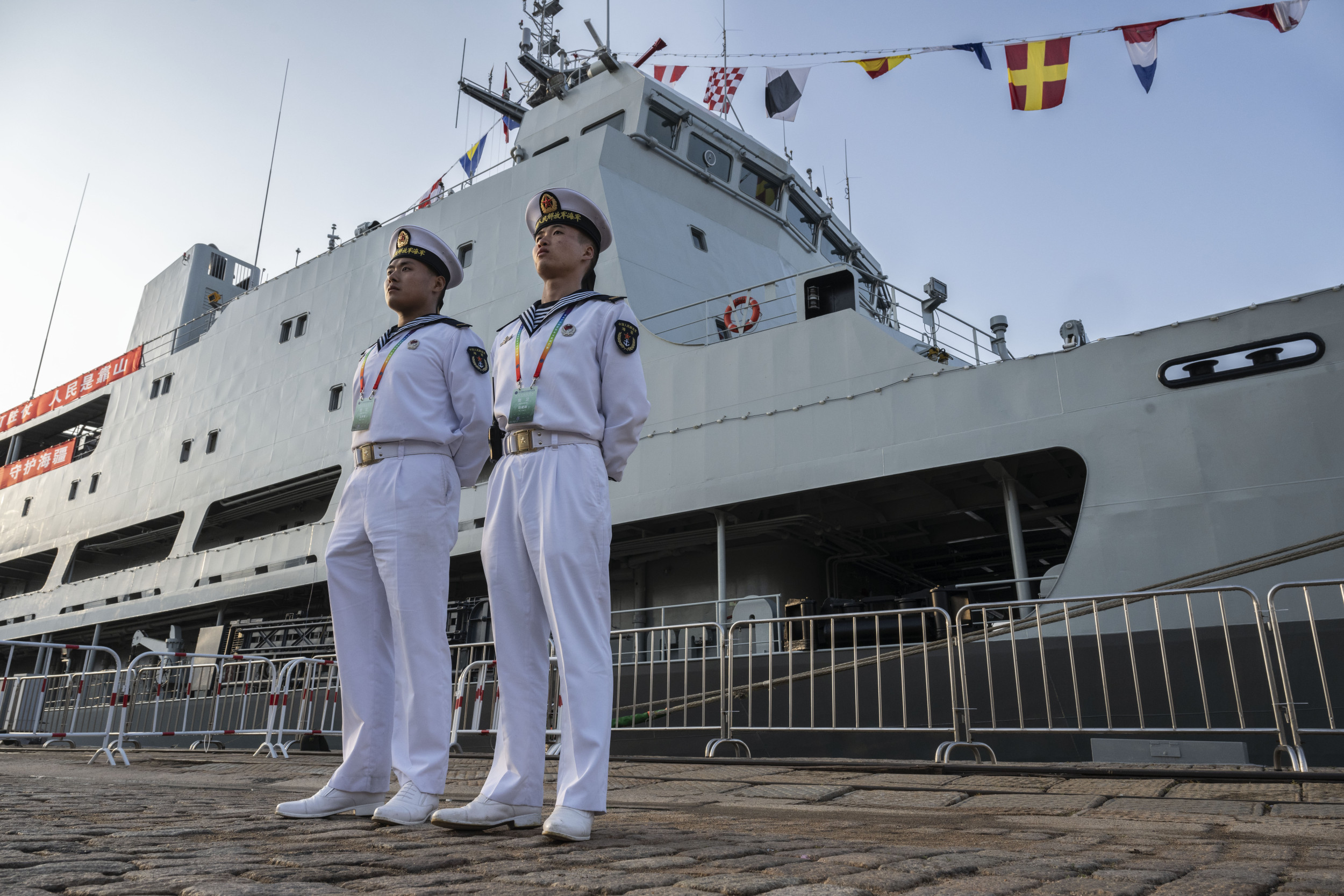China has issued a warning over the continued presence of a U.S. Army intermediate-range missile system in the Philippines and talks of deploying it in Japan.
A mid-range capability (MRC), or “Typhoon,” missile system was in April deployed to an undisclosed location in the north of Luzon island ahead of joint U.S.-Philippine war games. The platform can fire various munitions including Tomahawk cruise missiles, capable of reaching China’s east coast and its artificial islands in the disputed South China Sea.
Philippine Army Deputy Chief of Public Affairs Col. Reynaldo Balido, Jr. said last week that the MRC system is still being used for training and would remain in the country until Washington and Manila decide otherwise.
China has responded with concern to the weapon’s presence in the Philippines, with which it is locked in a long-running territorial dispute in the South China Sea.
Kevin Frayer/Getty Images
During the Chinese Defense Ministry’s monthly press briefing on Thursday, spokesperson Zhang Xiaogang demanded the U.S. withdraw the Typhoon system as soon as possible.
As for the country hosting the MRC, Zhang stated: “The Philippine side should not make the mistake of tying itself to the U.S.’s chariot, for this will only destroy its own home and cause [the Philippines] to eat its own bitter fruit.”
He further stated that Beijing has “a wealth of options in its toolbox” and will take “vigorous measures” as the situation develops.
Zhang was also asked about the prospect of an MRC in Japan, which the U.S. Army expressed interest in during recent talks with Japanese officials. Speaking at a defense conference earlier this month, Army Secretary Christine Wormuth said such a deployment would “go at the pace of the Japanese government.”
“The Japanese side is advised to act cautiously and not invite the wolf into the house and pander to the U.S., as that would only be putting itself in danger,” the spokesperson said.
The spokesperson reiterated Beijing’s claims that by standing up intermediate-range missiles in the Asia-Pacific, Washington is fueling an arms race that threatens regional security and international stability.
China will “respond resolutely and forcefully in accordance with the development of the situation and its own needs,” he said.
Japan, like the Philippines, is at loggerheads with China over contested territory: the Tokyo-administered Senkaku Islands in the East China Sea.
Late last month, a Chinese Y-9 reconnaissance plane entered Japanese airspace near Nagasaki Prefecture’s Danjo Islands, prompting Japan to scramble fighters.
A U.S. Army spokesperson told Newsweek that the 1st Multi-Domain Task Force, which deployed the missile system, had trained Philippine troops on use of the platform.
“The combined training from these exchanges enhances interoperability with the Philippine military, enabling effective cooperation during times of crisis,” he added. “Since we will never fight a conflict alone, it is essential that our allies and partners learn from us, just as we can learn from them.”
The U.S. is treaty-bound to come to the defense of both Japan and the Philippines in the event either comes under attack, and the trio are tightening defense ties with an eye toward China’s growing assertiveness on their doorsteps.
The Japan Self-Defense Forces did not immediately respond to written requests for comment.


